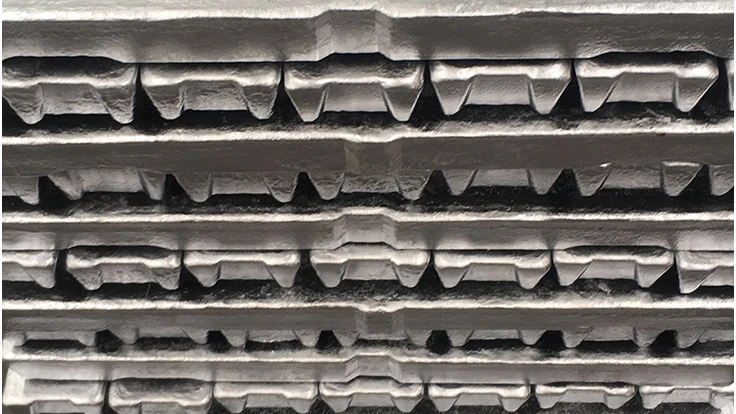
Recycling Today archives
The New York-based nongovernmental organization (NGO) Human Rights Watch says several global automakers with operations in China are using aluminum likely to involve forced labor in its production.
In a report titled “Asleep at the Wheel: Car Companies’ Complicity in Forced Labor in China,” the NGO says currently almost one-tenth of the world’s aluminum is produced in the Xinjiang Uyghur Autonomous Region (Xinjiang, or XUAR), a region in northwestern China where the Chinese government is "conducting a long-running campaign of repression against Uyghurs and other Turkic Muslim communities."
Fellow NGO, Denver-based NomoGaia, and New York-based consulting firm Horizon Advisory each issued reports in 2022 citing online Chinese state media articles, company reports and government statements to document Xinjiang aluminum smelters’ participation in labor transfers.
That research portrayed labor transfers tied to “the region’s repression of Uyghurs,” Human Rights Watch says. The link between the aluminum industry and forced labor involves “Chinese government-backed labor transfer programs, which coerce Uyghurs and members of other Turkic Muslim communities into jobs in Xinjiang and other regions,” according to the report.
In the forward supply chain, the NGOs say, “Aluminum ingots from Xinjiang [are] bought and sold by commodities traders, further obscuring the links between Xinjiang and global supply chains.” Regional producers could sell to the larger, South China-based Tianshan Aluminum, or Beijing-based Chinalco, which conduct business with global traders such as Glencore and Trafigura.
Although the aluminum supply chain can become convoluted, Human Rights Watch says a representative of the London-based International Aluminium Institute said it was “likely that a much higher percentage of aluminum supply could be traced back to the smelter, refinery and mine than currently is.”
Automotive production in the United States could depend in part on Chinese-made aluminum. In the first 11 months of 2023, some 111,000 metric tons of aluminum bars, sheets and plates shipped from China entered the U.S., according to Census Bureau data compiled by the U.S. Geological Survey (USGS). Only 711 metric tons described as crude or alloyed aluminum were shipped in that period, according to USGS.
Only Canada provided more semifinished aluminum (bars, sheets and plates) among all U.S. trading partners in that time frame, according to the USGS, despite the existence of a 10 percent tariff on Chinese imports.
In the same 11 months of 2023, 686,000 metric tons of primary aluminum and more than 3 million metric tons of recycled-content secondary aluminum were produced, according to the USGS.
The Aluminum Association, based in Washington, does not make its internally gathered trade figures available to members of the media. In the trade section of its website, it singles out China as a nation with excess production capacity that may subsidize its production.
Latest from Recycling Today
- BMW Group, Encory launch 'direct recycling’ of batteries
- Loom Carbon, RTI International partner to scale textile recycling technology
- Goodwill Industries of West Michigan, American Glass Mosaics partner to divert glass from landfill
- CARI forms federal advocacy partnership
- Monthly packaging papers shipments down in November
- STEEL Act aims to enhance trade enforcement to prevent dumping of steel in the US
- San Francisco schools introduce compostable lunch trays
- Aduro graduates from Shell GameChanger program





